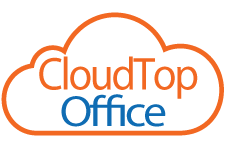Studies show that Citrix operates three to four times faster than Microsoft Terminal Services. Many factors contribute to Citrix's greater efficiency. Citrix's applications work and appear as local applications with an icon on your desktop. Microsoft Terminal Services demand that you login to a remote desktop—amounting to three or four mouse clicks before you are able to access your application. Terminal Services' performance speed is affected by factors outside of your company's control, such as Microsoft network latency. A recent study shows that Citrix can use up to 73% less bandwidth on your server than Terminal Services.
Citrix offers additional advantages not available with Microsoft Terminal Services. When faced with slow Internet speeds, such as a dial-up connection, Terminal Services will not work. While Citrix supports many operating systems, such as Windows, MAC, Linux, Java, Unix, IBM OS/2 and DOS Clients, Terminal Services supports only Windows Clients. Citrix supports high-resolution graphics; Terminal Services graphics are typically grainy, with delayed access. Citrix offers simple printing—you'll only see your own company's printers, whereas with Terminal Services environments, you'll see a pool of different printers from various Terminal Services' clients.

